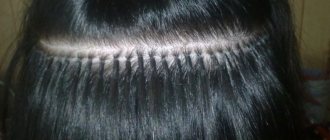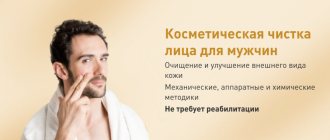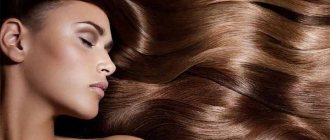The cherished dream of most girls is long, well-groomed hair. Unfortunately, some factors do not allow you to be proud of your full head of hair. In this case, cold hair extensions come to the rescue. The procedure is as harmless and fast as possible.
What is the technology, what should you know about hair extensions before visiting a salon?
Materials used
The main component without which extensions are impossible is hair. Natural strands are often . They can be Slavic, European, Asian.
- Slavic hair is considered to be of the highest quality: easy to dye, style, soft to the touch, straight.
- European curls are stiffer and darker than Slavic ones, so they are suitable only for a few girls.
- Asian strands are dark, difficult to dye, straight, and hard. Such hair is rarely used if a girl wants to achieve a long-term effect.
The choice of material depends on the structure of natural curls.
Spanish technology
Cold method hair extensions in this case involve the use of a special glue together with a fixative, which would match the tone of the hair in its shade. Although there are cases when it is completely transparent. It must be said that cold hair extensions using Spanish technology guarantee the longest period of wearing a new hairstyle, but you must follow the recommendations of the specialist and do hair correction on time to maintain the health of your hair.
Pros and cons of the procedure
Like any cosmetic manipulation, cold hair extensions have their positive and negative sides.
Advantages
Hot and cold extensions are similar. However, the method without using heating tools has more advantages :
- Relatively low cost of the procedure.
- The cold method is safe for natural curls, since the tresses are fixed without the intervention of hot curling irons, which injure the hair.
- Quick and easy removal of artificial material is achieved through the use of an adhesive base without sealing with an iron.
- Long time wear. Strands fixed using the hot method need to be adjusted after 5–7 months. Curls extended without the use of a straightener are slightly shorter in wear time - 3-4 months.
Attention! Each method of cold hair extensions has its own advantages.
Flaws
The procedure is not without some drawbacks, but against the backdrop of a large number of advantages they do not seem significant.
- Duration of the procedure . High-quality extensions by an experienced specialist take 5–6 hours.
- Technical shortcomings . If natural hair cannot boast of thickness, then there is a chance that the metal beads on which artificial strands are attached will be noticeable.
- Some restrictions in the choice of hairstyles and styling: some of them will open up the attachment points.
Important! The most significant disadvantage is the lengthy selection of an experienced craftsman. Only he will correctly perform the extension without causing harm to the natural strands.
Why is the procedure harmful?
In addition to damage to natural hair by an unqualified hairdresser, the owner of beautiful curls may face the following troubles:
- tangling of natural hair due to improper care;
- the use of low-quality glue that is harmful to hair;
- weakening of hair, hair loss;
- skin problems – seborrhea, itching.
Troubles can only be prevented by carefully selecting a professional and using high-quality materials .
Failed build-up
The use of cheap consumables and non-compliance with the technique of performing the procedure threatens to cut the ends of natural curls and cause them to become tangled.
With a large thickness of the fixed tresses, there is a strong load on the skin, which provokes headaches.
The most harmless extension
Unfortunately, there is no completely safe extension technology. All known types of fastening artificial strands involve some risk of damaging natural hair. The most gentle method is considered to be the method when the overhead strands are attached using hairpins .
Contraindications
The materials used in extensions (donor or artificial hair, attachments) are completely hypoallergenic. Curls of natural origin must undergo disinfection.
The danger of the extension procedure is created by the additional (albeit insignificant) weight of the false curls. The main load falls on the root system of the native hair. Therefore, extensions are contraindicated for the following problems:
- severe hair loss;
- hair is weak, thin, breaks easily;
- there are factors that can trigger hair loss: taking antibiotics, hormonal drugs, chemotherapy;
- frequent headaches, tendency to migraines;
- chronic scalp diseases.
If the symptoms are temporary, it is enough to eliminate the existing problems before extensions (complete the course of treatment, undergo a set of restorative procedures for the hair). For chronic illnesses, a preliminary consultation is required not only with a master stylist, but also with a doctor.
Types of cold extension
Let's take a closer look at the types of fastening artificial strands.
Spanish
The technology consists in using glue for cold hair extensions to attach artificial strands to natural ones.
The junction looks like a small translucent dense capsule.
The good thing about the technology is that the joints are practically invisible, which is why the extensions look as natural as possible.
Attention! Spanish extension technology looks natural only on light brown hair. On dark hair, the capsules may be noticeable.
Spanish hair extensions are considered the most convenient for everyday life , since hair care remains the same. Even dyeing and curling with hot curling irons are allowed. The effect of the procedure lasts for 5–6 months.
Tape
The method is considered the simplest and can be done even at home. Artificial strands are attached to the hair using an adhesive base.
During the extension process, natural curls are tightly sandwiched between tapes with artificial material.
The main advantage of this type is the speed of the procedure - from 40 minutes to 1 hour . We note the low cost, as well as the possibility of reusing hair on tapes for extensions.
Important! This method requires frequent correction - once every 2 months.
Mini tape extensions
The method completely replicates the tape extension technology. The difference is that smaller tapes are used.
The method is relevant for hair of medium thickness . Adhesive extensions with small strands last longer and are invisible on the hair.
Capsule technology
The artificial hair is attached with keratin capsules. The curls are fixed using the hot method using heated tongs or the cold method using medical glue.
The method is good for use on any hair type , since the capsules are almost invisible.
Benefits of extensions:
- Possibility of attaching strands with a natural hair length of 5–7 cm.
- Coloring in any way is allowed.
- The structure of natural hair is preserved.
Capsule extensions also have disadvantages:
- High cost of the procedure.
- The need for correction every 2-3 months as the attachment of the capsules weakens and natural curls grow back.
Important! When using capsule extensions, you should adhere to special care without oils or products with silicone.
Ultrasound technology
The method is considered a subtype of capsule extension. The capsule with the artificial curl is attached using ultrasonic waves. The keratin component of the capsule melts and attaches to the hair.
A significant disadvantage of the procedure is the extremely high cost , but this is compensated by the duration of wearing the strands (up to 6 months).
Japanese technology
The essence of extensions is to secure the strands using metal clips. The clips are bent with pliers; no glue is used.
The advantages of the procedure include high speed of the procedure, long-lasting effect , ease of removal without damaging natural hair.
The disadvantages are significant: if the hair is not thick enough, the attachment points are noticeable, and creases remain on the curls after removal.
African technology
The method is original in that no clips or glue are used at all to secure the curls. Artificial hair is woven into natural hair using braids - thin braids horizontally located at the roots.
The method is economical and environmentally friendly , but it causes a lot of pressure on the scalp, which sometimes leads to headaches.
African method
It is also called tress extensions. The method is based on “sewing” donor strands to natural ones using special natural cotton threads. First, the master pins up the hair, dividing it into a horizontal parting over the entire head, then braids small braids right close to the skin. Donor strands are already sewn to these braids. They are wide (called tresses), and secured at the top with threads. The advantage of the method is its durability. On average, afro extensions last up to two months. At the same time, the donor strands do not cause any discomfort.
How to choose an extension specialist?
When selecting a specialist, it is important to take into account experience and qualifications. You should carefully study previous extension works and compare them with photos of other masters.
To evaluate the professionalism of a specialist, do not hesitate to ask what materials are used, extension technologies, and what is the warranty period for wearing. An experienced master will clarify all points of interest .
Attention! If the hairdresser refuses to answer, refuse the procedure, no matter how attractive the price.
An important point is to study reviews of the work of a particular stylist.
Summarize
Hair extensions are a great way to change your appearance or correct existing shortcomings:
- partially add volume to those places where it is necessary;
- thicken the ends;
- “dilute” your own shade with colored curls;
- get the desired length.
The disadvantages of the procedure include the high cost and duration of both primary attachment and correction (it takes even more time!). Also, do not forget that constant wearing of donor curls is not recommended. It is necessary to take breaks so as not to provoke the loss of your own hair.
Share with your friends!
more
Read us in the Zen channel
How to do extensions at home?
It is possible to carry out tape extension technology yourself. The algorithm is like this:
- Divide your hair into thin strands.
- It is important that the thickness and width of the artificial curl fully correspond to the natural one.
- Attach the strand, moving 2 cm away from the roots.
The total number of strands varies from 20 to 50 depending on the density of natural curls.
What is the price?
Extension is a completely individual procedure, so the exact price for a specific case can only be found out from the master stylist who will perform the work. The price includes payment for the material (donor strands, consumables) and the work of the master.
On average, you may need from 50 to 300 donor strands (depending on the girl’s needs, as well as the amount of hair in one false strand). The length of the false curls varies from 40 to 80 cm.
Approximate cost of the extension procedure (in rubles) in different techniques:
- Japanese, Spanish (set of 100 strands 40-50 cm long, Slavic material) – 7500-9000;
- ribbon (set of 40 strands 40-50 cm long, Slavic material) – 8500-12500;
- gel or nanoextension (one hundred gram set of Slavic strands up to 50 cm) – 18,000-20,000.
The longer the donor curls and the greater the number of extension strands required, the higher the cost of the procedure.
When planning an extension, it is necessary to take into account the cost of upcoming corrections. High-quality donor strands will last the entire planned period of wear, that is, you will not need to buy new hair every time, but the work of the stylist to correct the hairstyle is paid separately.
Care after extensions
To maintain the attractive appearance of your curls for as long as possible, follow simple rules for caring for your hair extensions:
- It is prohibited to use care products with essential oils, silicone, or wax.
- You need to start combing your curls from the ends, gradually moving towards the roots.
- You need to wash your hair while standing, tilting your head so that the water flows from the roots to the ends. Gently apply detergent to the roots, then rinse with warm water.
- Do not use too hot water for washing.
Compliance with the rules of care is impossible without timely correction of hair extensions. Without adjusting the capsule, the ribbons become visible, making the hairstyle unkempt .
About correction of hair extensions
Hair before correction (3 months)
Correction of hair extensions is usually done every 3 months if it is a hot or cold look. Tape and Hollywood need to be adjusted more often - about once every 5-8 weeks.
You should not skip the correction, as this will lead to tangling and the formation of tangles. And this is fraught with hair loss. How donor strands are adjusted:
- Removing curls. To do this, a special composition is applied to the capsule or glue to destroy it. Then they are pulled together with forceps;
- The freed strand is carefully combed, removing any remaining keratin;
- Do this with every strand;
- Washing your hair with shampoo;
- The balm is applied only to the ends, as it prevents the high-quality adhesion of the donor curls to the native ones;
- The removed strands are cleared of capsules by cutting them (as a result, the length is slightly reduced) and reattached. This process is called recapsulation.
Video source: @ukrotiteli_volos
You can request new strands, but the cost will then be the same as for the primary procedure. Therefore, usually when correcting, the strands are partially replaced, or the required amount is added to maintain the length.
Women's opinions
Girls who have tried cold hair extensions say that this is a good and fairly inexpensive way to get long curls. Although some people didn't like the tape method. They advise girls to opt for capsule.
These ladies believe that this technique is better. By the way, some girls have come to the conclusion that for those who like loose hair, tape technology is more suitable. Girls who do ponytails and various hairstyles should pay attention to the capsule method. This is what women who have used different methods advise.
Who is it suitable for?
Adhesive Spanish extensions are well received by hair of any type, even very thin ones. The main condition: the surface of the hair must cover the first layer of capsules. Ten-centimeter native strands are enough for this.
The method will help women who are worried about the condition of their hair and do not want to expose it to additional harmful thermal effects. The hair will retain its structure and will not look worse.
Important! Cold Spanish technology will be an ideal solution for busy young ladies. You won’t have to go for correction every 14 days.
It won't be cheap
Options for extensions are temporary, when the period of wearing the strands is short, and long-term, from 2 to 4 months, with subsequent correction.
The first option can be made cheaper by using simpler materials, since they will not be present in the hairstyle for long. For the second, you need to choose exclusively high-quality, natural hair. Accordingly, the price for such an extension will be higher.
What these two options have in common is that you should never save money on the salon where the procedure is performed. Competent craftsmen constantly study techniques and invest a lot of effort and money in education. Accordingly, they expect decent payment for their work. In return, you will receive a beautiful hairstyle done with minimal impact on your own hair.











